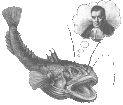UW Aquatic & Fishery Sciences Quantitative Seminar
Lee Qi
School of Aquatic and Fishery Sciences, University of Washington
Analysing the risks of incorporating climate-driven time-varying growth into the stock assessment of Splitnose Rockfish (Sebastes diploproa)
Abstract
In marine ecosystems, individual growth of a bony fish can be affected by variation in the environment, through direct (e.g. temperature on metabolism) or indirect (e.g. food availability on maximum attainable size) pathways. Climate variability can therefore have substantial impacts on the growth of individual organisms. However, long-term time series of marine fish growth are difficult to obtain, and few such datasets exist. A time series of climate-growth indices has been developed using otolith band reading techniques for a long-lived species of rockfish – splitnose rockfish (Sebastes diploproa) – and found to highly correlate with several climate indices in the California Current Ecosystem, such as the Multivariate ENSO Index and the Pacific Decadal Oscillation. However, this index has not been used to inform the stock assessments on which fishery management advice is based, due to a lack of a general framework for deciding when and how to incorporate indices of time-varying individual growth into an assessment model. Using bootstrap simulations of the most recent stock assessment model for this species, we test different methods of incorporating this index into a Stock Synthesis model, and develop a generic decision table as a tool to evaluate the advantages and disadvantages of incorporating climate-driven time-varying growth into stock assessment models. The decision table will contain values representing management outcomes such as lost yield and the probability of overfishing, generated through simulation modelling. We hypothesise that inclusion of time-varying growth will explain the variability in the data, and improve overall model fit.

